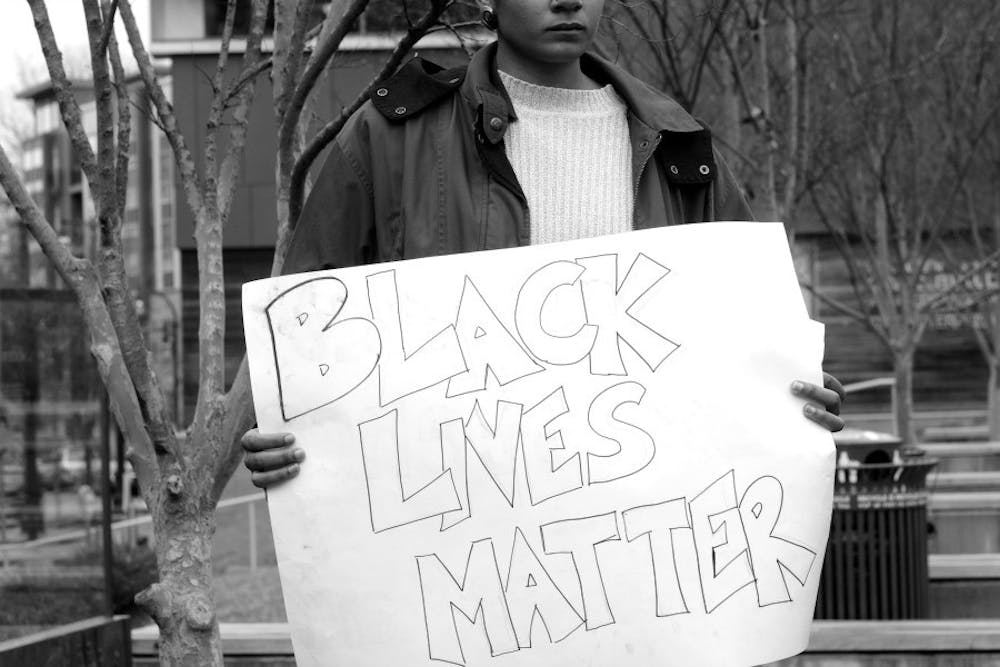The day after riots ripped through Baltimore Monday night, my Facebook feed was covered in shared articles, graphics and videos either decrying or sympathizing with those protesting the death of Freddie Gray.
Through the entire mess, there was one original status update that blasted through the rest. The mother of a high school friend figured out how to end the unrest, a task that evades the mayor of Baltimore, governor of Maryland and president of the United States. Her solution, as copied directly from Facebook: "All I have to say about the riots, they have bullets for that! SMH"
Aside from the expected problems that would come with the massacre of high school students by Baltimore police, both the previous post and dozens of tamer posts criticized Baltimore protestors as being violent, uneducated thugs who bring shame to the legacy started by Martin Luther King, Jr..
Unfortunately, solutions to bring about a lasting peace are rarely discussed. Instead, the narrative is focused on how the terrible protestors damaged property and canceled a baseball game. The uncomfortable truth is that while riots may be reprehensible, ignoring the issues causing them will only spur further violence.
Freddie Gray was charged with owning a switchblade, a charge that carries a penalty of up to one year in jail and/or a $500 fine. No one disputes he committed this crime, although recent would make such an argument feasible, like a North Charleston police officer planting a Taser on the body of Walter Scott, a black man he had just shot five times in the back. But while police and eyewitnesses have provided conflicting information about the moment of arrest, several videos show Gray screaming in pain as officers drag him into a police van. Very little is known about what happened in the van, except that 42 minutes after police requested the transport van, they were calling for a medic. Gray fell into a coma and died a week later.
So why did he run? Many professional and amateur commentators have been quick to point out Gray only ran because he had something to hide, and that police were justified in pursuing him. However, an in-depth investigation of the Baltimore Police Department (BPD) by The Baltimore Sun shows that BPD has a strong history of strong-arming Baltimore residents.
Since 2011, more than 100 people have won lawsuits against BPD, costing taxpayers $5.7 million in settlements and an additional $5.8 million in legal fees. Among their victims: a 15-year-old boy, 26-year-old pregnant accountant, 50-year-old woman selling church tickets and an 87-year-old grandmother.
This is not an issue of one man who ran from the police or a few bad cops in an otherwise pristine organization. This is systematic racism that needs to change so that moral and respectful cops can safely execute their duties and citizens can feel safe in their own homes.
Non-violent protest has been the most common mode of promoting change and, in many respects, is the best. However, there are some instances when people are too scared, too angry and too close to the oppression that threatens their lives.
It would be easy for me, a white guy from rural Ohio, to sit in King Café, sip on a chai latte and write an editorial on my MacBook Pro calling Baltimore residents thugs and animals.
When the names of black Americans executed by police continue to pile up - Michael Brown, Eric Garner, John Crawford III, Walter Scott, Freddie Gray, 12-year-old Tamir Rice and 7-year-old Aiyana Stanley-Jones, to name a few - it is unfortunate, but understandable, that violence is the only way in which some people can find their voice to speak out against the deadly oppression they are experiencing. This is not to justify riots or violence against police, but instead to understand the motives behind this violence. Unless we can confront the issues behind the riots, short-term solutions like curfews and tear gas will only continue to inflame emotions and increase tension.
Of course, not all riots are demonized. When the Chicago Bulls won the NBA Finals in 1992, riots resulted in the arrest of 1,000 "fans," the injury of nearly 100 police officers and approximately $10 million in property damages.
When Penn State fired Joe Paterno in 2011, The New York Times reported on "a display of anger and frustration," where students tipped over a news van, tore down lampposts and street signs, shattered car windows and threw rocks at police. When Ohio State won the NCAA Division I Football Championship in 2015, Columbus police used tear gas attempting to stop students from entering Ohio Stadium. The students broke in anyway and tore down a goal post, but still caused the chief of police to institute a review of tear gas policies. And in 1998 in Oxford, Ohio, dozens of Miami students were arrested after battling police and causing $5,000 in damage to DuBois Book Store.
Maybe Baltimore protestors would be considered people, not thugs, if they were rioting over the Ravens.
Sam Hunter
huntersl@miamioh.edu

